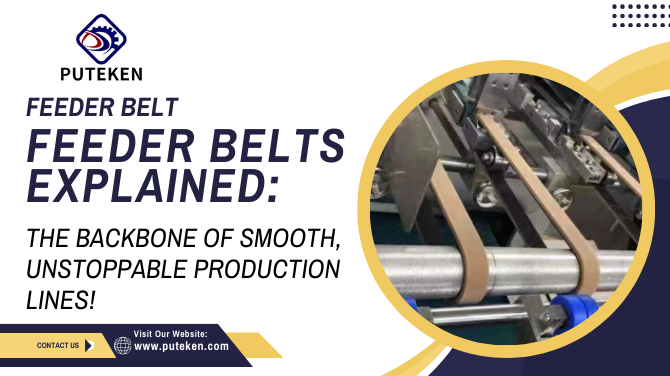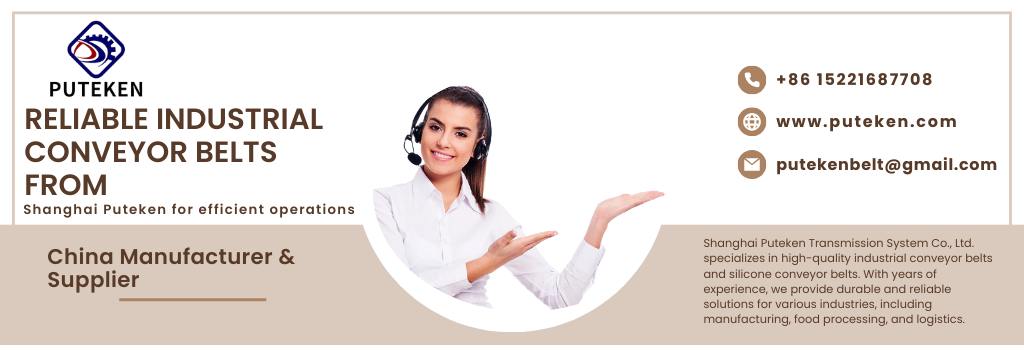
In today’s fast-paced manufacturing world, ensuring smooth, reliable, and continuous production is no longer a luxury—it’s a necessity. Every second of downtime can translate into significant financial loss, delayed deliveries, and missed opportunities.
Indeed, while giant machines and complex robotics often steal the spotlight, it is the humble Feeder Belt that consistently drives productivity behind the scenes. Without it, raw materials wouldn’t be positioned correctly, products wouldn’t move seamlessly from one phase to another, and entire systems could come to a screeching halt. Therefore, understanding the essential role of Feeder Belts is key to optimizing your production line’s performance.
What is a Feeder Belt?
A Feeder Belt is a type of conveyor belt specifically designed to transfer materials accurately and smoothly into machinery or from one production phase to another. Unlike traditional conveyor belts that focus solely on transport, feeder belts play a more dynamic role — they regulate the flow, pace, and alignment of materials, ensuring precision at every stage.
Think of a feeder belt as the skilled hands of an assembly line worker, gently moving parts exactly where they need to be, at just the right time. Without it, chaos would reign, and production efficiency would plummet.
Key Functions of Feeder Belts in Production Lines
You might wonder, why is a simple belt so important? Well, Feeder Belts serve several critical functions:
- Material Feeding: Regulating the rate at which materials enter machines.
- Spacing and Alignment: Ensuring products are evenly spaced and correctly oriented.
- Load Management: Handling varying weights and textures without product damage.
- Flow Control: Allowing machines to operate at their optimal speed without bottlenecks.
Because of these functions, a production line without a reliable Feeder Belt is like a car without wheels—it’s going nowhere fast!
Different Types of Feeder Belts
Not all Feeder Belts are created equal. Depending on your production needs, you might need a specific type.
- Rubber Feeder Belts
Rubber belts are ideal for industries where strength and durability are crucial. They resist wear, provide excellent grip, and handle heavy loads without stretching. - PU Feeder Belts
Polyurethane (PU) belts are known for their flexibility, chemical resistance, and hygienic properties. They are perfect for food and pharmaceutical industries. - Fabric-Reinforced Feeder Belts
These belts offer enhanced strength and stability by incorporating fabric layers. They are great for applications requiring both flexibility and toughness.
How Feeder Belts Enhance Efficiency?
Efficiency is the name of the game in modern production. A high-quality Feeder Belt can:
- Reduce Downtime: Fewer jams and errors mean more uptime.
- Improve Product Quality: Consistent feeding reduces defects.
- Lower Maintenance Costs: Durable belts last longer and require less frequent replacement.
- Increase Output: Faster, more reliable feeding allows production to scale effortlessly.
In other words, a feeder belt can turn a sluggish production line into a lean, mean manufacturing machine!
Common Applications Across Industries
Feeder belts are everywhere. You just might not notice them because they do their job so well.
- Food and Beverage Industry
From feeding cookie dough into ovens to transporting packed goods to inspection stations, Feeder Belts ensure delicate items move without damage. - Textile Industry
In textiles, feeder belts manage the smooth flow of fabrics through printing, cutting, and sewing machines. - Printing and Packaging
Ever wonder how magazines come off the presses so perfectly stacked? That’s the Feeder Belt at work, ensuring each page is in the right place. - Electronics Manufacturing
Tiny components need careful handling. Feeder Belts transport them without static buildup or misalignment, critical for assembly lines making smartphones, laptops, and more.
Challenges in Feeder Belt Performance (and Solutions)
No system is perfect, and Feeder Belts have their challenges too. Common issues include:
- Slippage: Resolved with belts that have a high-friction surface.
- Misalignment: Solved with precision engineering and guided belt systems.
- Wear and Tear: Mitigated by choosing durable materials like rubber or reinforced fabrics.
Understanding these issues beforehand can save you headaches (and money!) down the line.
How to Select the Right Feeder Belt for Your Needs?
Choosing the right Feeder Belt isn’t just about grabbing the first belt you see. Consider:
- Material Compatibility: Make sure the belt won’t react negatively with your product.
- Load Weight: Heavier loads require stronger belts.
- Environmental Conditions: Temperature, humidity, and chemicals can affect belt longevity.
- Speed Requirements: High-speed operations need belts that resist stretching.
Need help? Companies like Shanghai Puteken Transmission System Co., Ltd. offer expert consultations to guide you to the perfect solution.
Maintenance Tips for Prolonging Feeder Belt Life
Want to make your Feeder Belt last longer? Here’s how:
- Regular Inspections: Catch small issues before they become big problems.
- Proper Cleaning: Keep belts free of debris and buildup.
- Tension Adjustment: Ensure the belt is properly tensioned to avoid slipping or premature wear.
- Replacement Schedule: Don’t wait for a catastrophic failure. Replace belts based on manufacturer recommendations.
With proper care, your feeder belt could be the most reliable part of your entire production line!
Innovations and the Future of Feeder Belts
The future is exciting! Emerging trends in Feeder Belt technology include:
- Smart Belts: Sensors embedded in belts for real-time monitoring.
- Eco-Friendly Materials: Sustainable belts made from recyclable or biodegradable materials.
- Higher Precision Designs: Belts tailored for micron-level accuracy, essential for industries like aerospace and microelectronics.
As industries continue to evolve, Feeder Belts will evolve right alongside them, providing even greater reliability and functionality.
Why Shanghai Puteken Transmission System Co., Ltd. Is Your Best Partner?
When it comes to sourcing high-quality Feeder Belts, experience matters. Shanghai Puteken Transmission System Co., Ltd. stands out because:
- Extensive Expertise: Decades of experience in transmission system solutions.
- Wide Product Range: A diverse selection to meet any industry’s needs.
- Customization Services: Tailored solutions for unique production requirements.
- Global Reach: Trusted by companies around the world.
- Commitment to Innovation: Always at the forefront of belt technology.
Choosing Shanghai Puteken means choosing reliability, innovation, and peace of mind.
In the grand orchestra of industrial production, the Feeder Belt might seem like a quiet player. However, its role is absolutely critical to ensuring smooth, efficient, and uninterrupted operation. From food to electronics and textiles to printing, industries worldwide owe much of their success to these humble yet powerful components.
If you’re serious about boosting your production line’s performance, investing in the right Feeder Belt is not just a smart move—it’s an essential one. And there’s no better partner for this journey than Shanghai Puteken Transmission System Co., Ltd.
So, the next time you marvel at a perfectly running production line, remember: behind the scenes, it’s the feeder belt that’s making it all happen!
FAQs
1. What materials are Feeder Belts typically made of?
Feeder Belts are commonly made from rubber, polyurethane (PU), or fabric-reinforced composites, depending on the application.
2. How often should a Feeder Belt be replaced?
It depends on usage and environmental conditions, but regular inspections are key. Typically, belts should be replaced every 6–12 months for optimal performance.
3. Can Feeder Belts be customized for specific needs?
Absolutely! Companies like Shanghai Puteken offer customization options for material, size, coating, and reinforcement.
4. Are Feeder Belts suitable for food-grade applications?
Yes, especially PU feeder belts, which are hygienic and resistant to contamination.
5. What industries use Feeder Belts the most?
Feeder Belts are widely used in food processing, textiles, electronics manufacturing, printing, and packaging industries.
